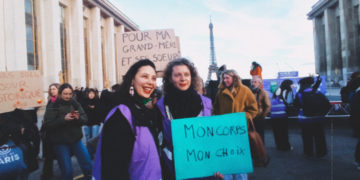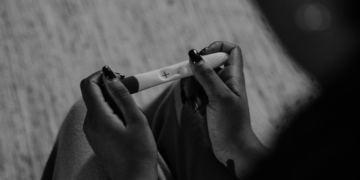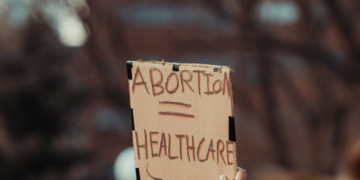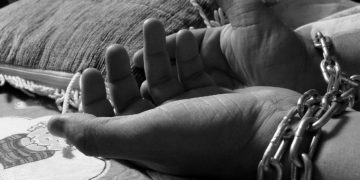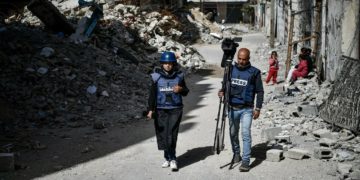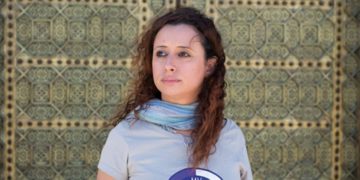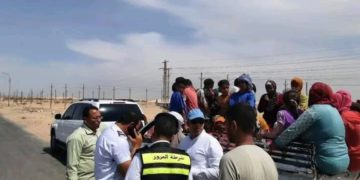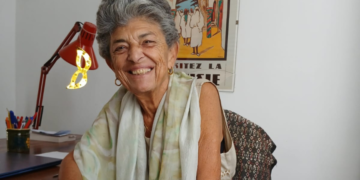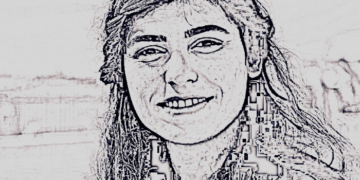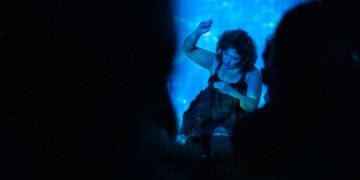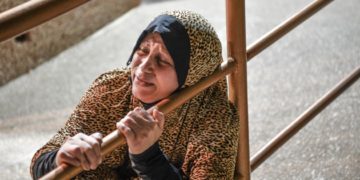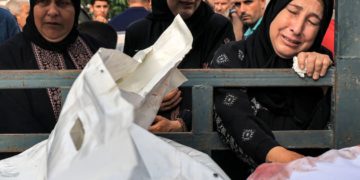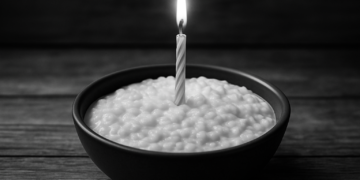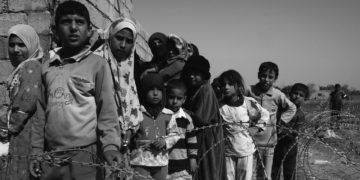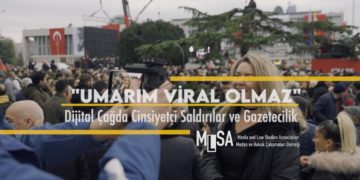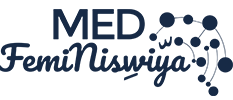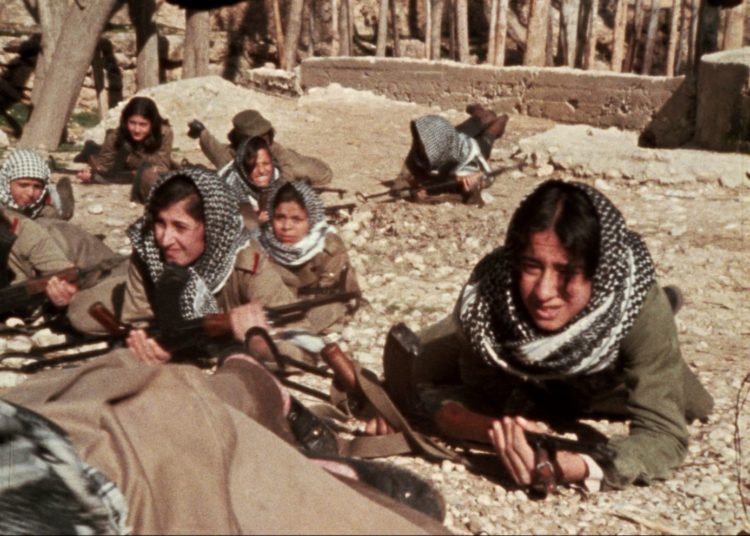This post is also available in: Français (French) العربية (Arabic)
In the current digital age, going after Palestinian journalists has taken on new forms. For example, the Israeli occupation authorities are deliberately and publicly erasing the Palestinian narrative by removing it—algorithmically—from social media platforms.
Recently, the Knesset Legislative Committee unanimously approved a draft law obligating Facebook, Instagram, Twitter, and TikTok to take down any content that Israel deems to be harmful to it, according to the contracts concluded with these companies. This law was non-compulsory before 2022, but after its recent approval, it became binding to all digital companies, going so far as to ensure the non-renewal of contracts in cases of non-compliance.
In this context, journalist Samah Manasra, from Hebron, tells Medfeminiswiya: “The occupation authorities are going after anyone who speaks about the Palestinian cause or who brings up the violations against women and children. This persecution takes on new shapes and forms every day, like going after us on social media platforms despite the existence of international covenants that prohibit the infringement of freedom of opinion and expression. It’s a clear violation of Article 19 of the Universal Declaration of Human Rights.”
“We have taken it upon ourselves, amid all these constraints, to continue communicating with the world, devising new ways to bolster Palestinian content. For example, when we want to type the word ‘martyr,’ ‘occupation,’ ‘resistance,’ or ‘camp,’ we include spaces between each of the letters to deconstruct the words, or we use some symbols instead of letters if they look similar. We do this to be able to continue covering events without repression, relaying the truth as it is, bringing global justice to our cause,” Manasra adds.
Throughout 2022, the Sada Social center documented more than 1,230 violations against Palestinian digital content, and Meta marked the largest number of violations, across all its platforms (Facebook, Instagram, and WhatsApp). These violations took on different forms, such as deleting and blocking accounts and pages, removing content, shadowbanning, and blocking people from posting, livestreaming, and broadcasting. Restrictions were also imposed on publishing, and on WhatsApp, many numbers were blocked and groups deleted.
Meta management continues to include Palestinian terms in the lists of prohibited terms that dictate the algorithmic operation of the company’s many platforms
The Sada center points to the continuous digital targeting of Palestinian journalists, noting that 58% of the online violations were against journalists and media institutions and that they were directly related either to the content that had been published on these social media pages, or to the journalists’ carrying out of their work when covering events on the ground.
In light of this reality, Omar Nazzal, a member of the General Secretariat of the Palestinian Journalists Syndicate, tells Medfeminiswiya that the past year has witnessed “a significant increase in social media violations against Palestinian content as a whole, including content published by journalists on their personal pages and even content published on official and organized media pages. Access to this content is being restricted, and those posting the content are being pressured, their pages even deleted. We’ve documented 1,002 violations against Palestinian content at the Syndicate’s Freedom Committee.”
According to the statement released by Sada, Meta management continues to include Palestinian terms in the lists of prohibited terms that dictate the algorithmic operation of the company’s many platforms. These lists contain Palestinian national names and symbols, historical figures, political parties, and associations active in the field of solidarity with the Palestinian people, some of which were even included in terrorist lists.
Today, digital experts agree on the difficulty of counting the number of closed-down accounts because not everyone whose account is restricted reports it. However, the number of accounts that are restricted or closed annually in the wake of certain field and political developments is estimated to be in the thousands, showing the direct complicity between social media companies and the occupation and oppression regimes.
On the other hand, Nazzal indicates that the Freedom Committee of the Palestinian Journalists Syndicate recorded a significant increase in the number and nature of violations against journalists in the year 2022 specifically, describing this year in particular as the “most violent”, as the Committee counted 902 violations in its annual report. The occupation authorities committed the largest part of those violations, which included the killing of two journalists: Shireen Abu Akleh in the Jenin camp in the northern West Bank, and Ghufran Warasneh near the Al-Aroub refugee camp north of Hebron.
Today, the Israeli occupation authorities still have 15 journalists detained in their prisons, some of whom are sentenced to life imprisonment and harsh and long-term sentences. They are all living in poor conditions in prison. Some of the journalists who were arrested include Tahrir Abu Sariya from Nablus and Lama Ghosheh from Jerusalem. Ghosheh was released in mid-September 2022, but under very strict, almost impossible conditions: she is sentenced to house arrest, is banned from using computers, phones, and social media, and was also issued a fine of 50,000 shekels, according to Hassan Abed Rabbo, spokesman for the Commission for Detainees and Ex-Prisoners' Affairs.
The Palestinian authorities, also to blame
Regarding the violations committed by authorities inside the Palestinian territories, Nazzal explains that the Syndicate recorded a stable rate and number of violations across the past years in the West Bank and the Gaza Strip, “but we cannot depend on this as a single indicator because there are other, more important indicators related to the legal environment and how the Palestinian security services bypass it, and others related to the nature of the laws themselves and their unfairness to journalists. There are also those related to employment and the principle of equal opportunity.” Nazzal asserts that “there is nothing rosy about press freedom in Palestine,” and that “the grip security services have over journalists tightens sometimes, and we at the Syndicate constantly endeavor to reach zero violations of the press corps.”
It is worth noting that not all violations are egregious, in the sense that they are not always violent and visible. There exists what Nazzal calls “soft violations” that may go without being properly documented and which fall within the framework of practices that include job discrimination, verbal and physical harassment, a “lack of working conditions that meet the needs of journalists who are mothers, and wage discrimination.”
The Palestinian authorities sprinkle salt on the wound, and journalists feel that they are, indeed, alone in the field…

For her part, Palestinian journalist Najla Zeitoun points out to Medfeminiswiya that over her many years of field work, she was threatened with arrest, shooting, and tear gas suffocation. She was in fact hit by a rubber bullet fired by Israeli occupation soldiers while she was performing her journalistic duties. She has also faced major difficulties in terms of freedom of movement and access, freedom of information, and freedom of expression.
Concerning the incident of Palestinian security attacking a number of citizens, among whom were journalists, during the suppression of a demonstration condemning the killing of activist Nizar Banat, Zeitoun comments, “After this incident, which happened in late June 2021, I was subjected—in my capacity as journalist—to attempts to restrict my work. Not only was I physically assaulted in the field, but my personal phone was confiscated, my privacy violated, and I was threatened. My phone has still not been returned to me. I filed a complaint before the Palestinian military court with a group of female journalists, but the perpetrators have not been prosecuted or held accountable. This was accompanied by many attempts to restrict our freedom in our journalistic work, via the institutions in which we were working. Even the institutions were subjected to several threats, but their response was to take on a new role of restricting our work themselves, censoring our social media publications, and excluding us from covering anything related to the Palestinian government. In some cases, they even reprimanded us.”
Zeitoun also states, regarding the role of the syndicate, that it did not provide due protection to women journalists “despite our having to fight for our livelihoods, the restrictions on our freedoms, the shutting down of our Facebook and Twitter accounts, and the threats we received.”
Najla Zeitoun’s testimony about what she was subjected to and the dire effects it had on her psychological health, her economic situation, and her family and children proves how easy it is to affront the dignity of journalists in Palestine today. It also reveals the continued restriction of their freedom and the obliteration of their online footprint. As if the occupation’s brutality wasn’t enough… the Palestinian authorities sprinkle salt on the wound, and journalists feel that they are, indeed, alone in the field.
